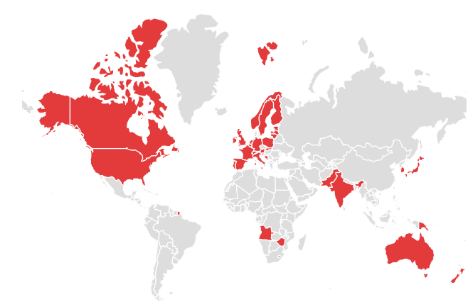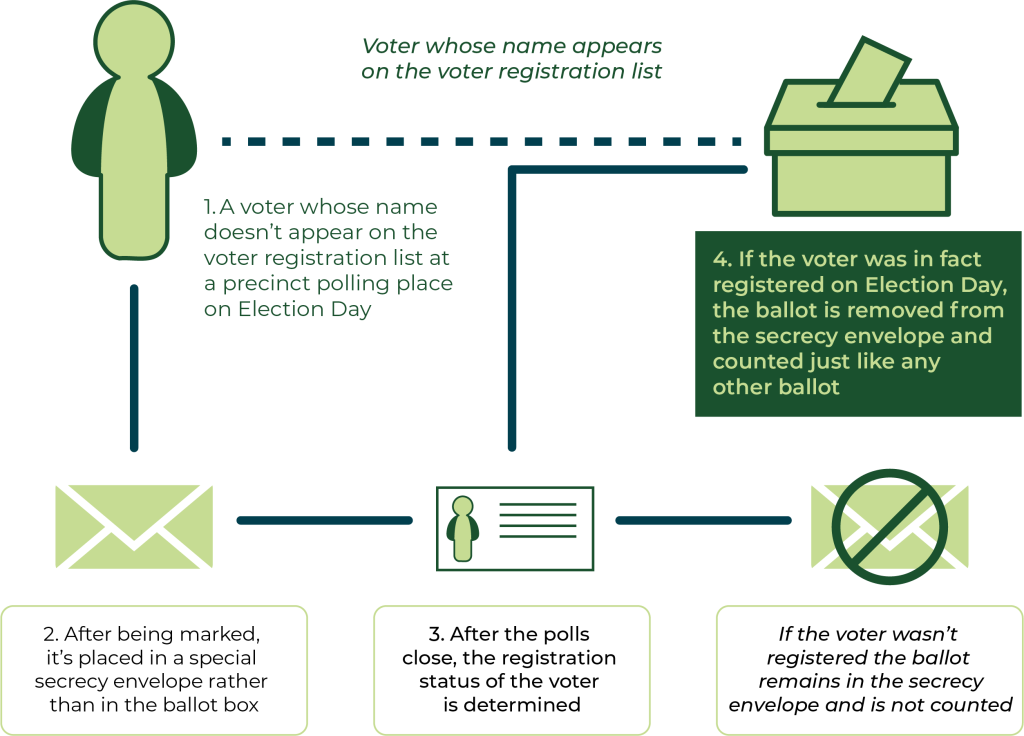6.3 Alternate Voting Arrangements
 Running an election where millions – sometimes tens of millions of voters – cast votes in a single day is a monumental feat of coordination. At an individual level, some jurisdictions may require voters to travel or take leave from their jobs to cast a vote. To make things easier for voters and election administrators, it might make sense to allow alternative voting arrangements. These measures, called convenience voting, might include allowing some voters to cast their ballots before election day or allowing voters to cast their ballot by mail (Gronke et al., 2008).
Running an election where millions – sometimes tens of millions of voters – cast votes in a single day is a monumental feat of coordination. At an individual level, some jurisdictions may require voters to travel or take leave from their jobs to cast a vote. To make things easier for voters and election administrators, it might make sense to allow alternative voting arrangements. These measures, called convenience voting, might include allowing some voters to cast their ballots before election day or allowing voters to cast their ballot by mail (Gronke et al., 2008).
Advance Voting
Early voting or advance voting allows voters to cast their votes in their electoral district in advance of election day. Early voting locations are typically open later into the evening to accommodate voters who might be unable to vote during conventional business hours (ACE Electoral Knowledge Network, n.d.-h).
Absent or Absentee Voting
Absentee voting allows voters to cast a vote when they will not be able to vote in person at the election location. Voting by mail is the most common method for voting by mail. In some countries, such as Canada, voters must apply for a special ballot by a prescribed deadline. The EMB will then send out the correct ballot, two envelopes (for privacy) and instructions for completion (Elections Canada, 2025 May). Forty-five countries allow some form of voting by mail (ACE Electoral Knowledge Network, n.d.-a)

In many American states, voters must request an absentee ballot, and there are a limited number of reasons for granting the request. Some states, such as Florida, offer no-excuse absentee voting, and others, such as Colorado, automatically mail a ballot to all voters (Ballotpedia, 2025b). Depending on the state, absentee ballots can be returned by mail or in person at centralized locations such as a drop box or county election office (Gronke et al., 2008).
Pandemic Voting
Provisional Ballots
Sometimes a vote may be accepted tentatively, but its counting will be contingent on verification. These provisional ballots are typically cast by voters who are eligible but are not on the voters list (Ballotpedia, 2025b). The ballot is marked and set aside until the voter’s identity and registration can be authenticated. Once verified, the vote is counted. The graphic below illustrates a typical process for a provisional ballot in America.

Image Description
A flowchart explains what happens when a voter’s name does not appear on the voter registration list at a polling place on Election Day.
The process begins with a figure representing a voter whose name doesn’t appear on the registration list.
The voter is allowed to cast a ballot, which is placed in a special secrecy envelope instead of the ballot box.
After polls close, election officials determine the voter’s registration status.
If the voter was registered on Election Day, the ballot is removed from the secrecy envelope and counted like any other.
If the voter was not registered, the ballot remains sealed and is not counted.
The diagram also shows a contrasting path for voters whose names do appear on the registration list—they vote normally, and their ballots are immediately counted.
Why Make Voting More Convenient?
 The rationale for convenience voting reflects the assumption that voting is costly and that participation can be increased by reducing the cost (Blais et al. 2019). There are also embedded normative assumptions that increasing voter turnout is a positive outcome (Gronke et al., 2008). There is some evidence to indicate that reducing travel distance can increase turnout (Garnett & Grogan, 2021), as does reducing voting time (Herron & Smith, 2016), and the expansion of mail voting (Bonica et al., 2021). Convenience voting is also positioned as a mechanism to reduce turnout inequality by increasing turnout among voters from disadvantaged groups (Bonica et al., 2021). It is likely that support for convenience voting will continue to grow.
The rationale for convenience voting reflects the assumption that voting is costly and that participation can be increased by reducing the cost (Blais et al. 2019). There are also embedded normative assumptions that increasing voter turnout is a positive outcome (Gronke et al., 2008). There is some evidence to indicate that reducing travel distance can increase turnout (Garnett & Grogan, 2021), as does reducing voting time (Herron & Smith, 2016), and the expansion of mail voting (Bonica et al., 2021). Convenience voting is also positioned as a mechanism to reduce turnout inequality by increasing turnout among voters from disadvantaged groups (Bonica et al., 2021). It is likely that support for convenience voting will continue to grow.

